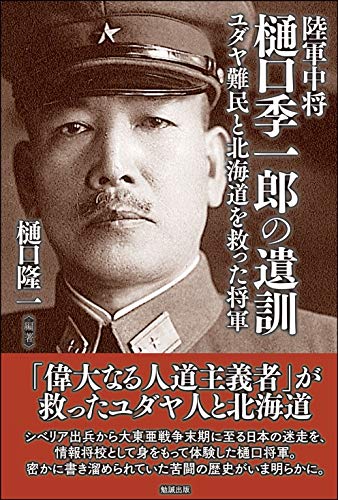- 著者
- 樋口隆一 [ほか] 編著
- 出版者
- 明治学院大学
- 巻号頁・発行日
- 2013
1 0 0 0 陸軍中将樋口季一郎の遺訓 : ユダヤ難民と北海道を救った将軍
1 0 0 0 OA 現代日本の音楽生活におけるバッハの音楽
- 著者
- 樋口 隆一
- 出版者
- 明治学院大学藝術学会
- 雑誌
- 明治学院大学藝術学研究 = Meiji Gakuin University Art Studies (ISSN:18802745)
- 巻号頁・発行日
- vol.24, pp.35-43, 2014-07-10
【論文/Article】
1 0 0 0 OA バッハ研究と私
- 著者
- 樋口 隆一
- 出版者
- 明治学院大学藝術学会
- 雑誌
- 明治学院大学藝術学研究 = Meiji Gakuin University Art Studies (ISSN:18802745)
- 巻号頁・発行日
- vol.25, pp.1-18, 2015-07-31
【最終講義/Last Lecture】
1 0 0 0 IR 近代日本の洋楽受容 (特集 近代日本と西洋音楽)
- 著者
- 樋口 隆一 HIGUCHI Ryuichi
- 出版者
- 明治学院大学言語文化研究所
- 雑誌
- 言語文化 (ISSN:02881195)
- 巻号頁・発行日
- no.29, pp.3-14, 2012-03
【特集】近代日本と西洋音楽
- 著者
- 樋口 隆一 時光 義徳 古森 徹哉
- 出版者
- 天然有機化合物討論会実行委員会
- 雑誌
- 天然有機化合物討論会講演要旨集
- 巻号頁・発行日
- vol.28, pp.224-231, 1986
Mechanisum of the diazomethane degradation for the sugar-aglycone linkage of the gypsogenin 3-O-glycoside(1) was studied and the useful degradative reaction was applied to the structure determination of quillayasaponin. Since three kinds of functional groups of 1, the 4α-CHO group in the aglycone, COOH and 4-OH group in the glucuronic acid were presumed to contribute to the degradative reaction, the necessarity of the each functional group was examined using a model compound 7, and only the 4α-CHO group was showed to be essential. By taking the above evidence and the usual reaction products of aldehyde with diazomethane into account, the reaction must be proceeded through such a oxide intermediate as shown in the scheme 6. QS-III(25), a major acylated genuine bisdesmoside of the so-called quillayasaponin, afforded a 28-O-glycosidal triterpenoid(29) still possessing acyl moiety by this diazometane degradation. On the basis of chemical and spectral evidence, especially, comparison of the ^<13>C NMR spectra of 29 and its desacyl compound(30)(Table 1), the site of linkage of acyl moiety of 29 was determined. The structure of 25, therefore, was complex acylated oligosaccharide as shown in scheme 8.
1 0 0 0 OA ブラームスと十九世紀のバッハ研究(美学会第三十四回全国大会報告)
- 著者
- 樋口 隆一
- 出版者
- 美学会
- 雑誌
- 美學 (ISSN:05200962)
- 巻号頁・発行日
- vol.34, no.3, 1983-12-31
Der Lebensweg von Johannes Brahms lief fast parallel mit der Entwicklung der Bach-Renaissance im 19. Jahrhundert. Im Vortrag wurde die Gegeneinanderwirkung zwischen Brahms und Bachforschung erortert aus folgenden Gesichtspunkten : 1) Alte-Bach-Ausgabe ; 2) Briefwechsel mit Philipp Spitta ; 3) Brahms als Bach-Interpret. Zum 2) wurde die achtjahrige Pause hervorgehoben, die sich vielleicht auf die Meinungsunterschiede uber Bach-Sache bezieht. Zum 3) wurden gezeigt die Auffuhrungspartitur der Bachschen Kantate 34 "O ewiges Feuer, o Ursprung der Liebe" (Sammlung der Gesellschaft der Musikfreunde in Wien, Signatur : III 25453/H 27794 ; Auffuhrungsdatum : 10. 1. 1875). Daraus geht hervor, dass Brahms dort mehrfach die Instrumentation veranderte, namlich die originalen Trompeten-Partien teilweise in die Stimmen von Floten bzw. Oboen oder sogar Klarinetten umschreiben liess, die ausser 2 Oboen alle zusatzlich sind. 2 Fagotte und Orgel behandelt er auch nicht buchstablich : Fagotte manchmal als Unterstutzung der Manner, Orgel mit "Tacet"-Stelle. Schluss : Brahms' Verhaltnis zur Bachschen Musik wird gepragt durch seine positivistische Haltung. Positivistisches Historismus im Gegensatz vom "enthusiastischen Historismus" (Doflein) bei Mendelssohn. Seine Rolle als Brucke zwischen Musikwissenschaft und Praxis ist schatzenswert. Als Bach-Interpret ist er prinzipiell originaltreu, aber doch gegebenfalls so frei, wie oben gezeigt.

